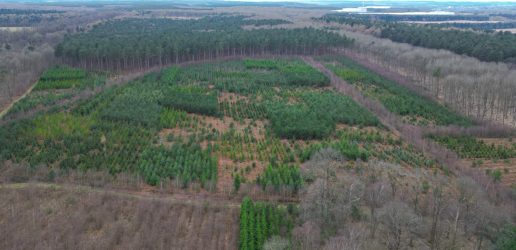
There is growing interest in working with natural processes (WWNP) to reduce flood risk. WWNP aims to protect, restore and emulate the natural functions of catchments, floodplains, rivers and the coast. It includes, for example, restoring peat moorlands, re-meandering rivers, targeting woodland planting and improving floodplain connectivity to help to reduce the flood risk to communities downstream.
Considerable research has taken place to improve our understanding of the effectiveness and wider benefits of WWNP. This has meant that it has been hard for flood risk managers to access up-to-date information on WWNP measures and to understand their potential benefits.
Now, for the first time, the evidence from these studies has been summarised and published in one location as the Environment Agency’s Working with Natural Processes – Evidence Directory.
The Directory includes a detailed literature review, 65 case studies, 14 one-page summaries of each measure, as well as guidance on how to monitor their impact. It also identifies the research gaps that still need to be addressed.
It is accompanied by open access maps that will help decision-makers to think about the types of measure that may work in a catchment and where to potentially locate them. In turn, a supporting guide explains the types and extent of evidence needed to help make the case for WWNP when developing business cases.
Forest Research was part of the core research team undertaking the study and reviewed the evidence on the woodland related aspects of WWNP. Chapter Three of the Directory focuses on ‘woodland management’ and includes, amongst others, sections on catchment woodland, cross-slope woodland, floodplain woodland and riparian woodland.
Find out more about our work on WWNP to reduce flood risk.
Useful sites
Recent News
View All news
Seventeen coniferous tree species show early promise for future commercial timber production in the UK
Researchers have set up a network of nine large scale experiments across the UK to test the suitability of 17 tree species as potential alternatives for future commercial timber production.
Forest Research are looking for people involved in the harvesting, processing, transport, import, or trade of firewood in Scotland to complete an important survey.

New guide to help local authorities conduct a people survey on the social value of their treescapes
A new step-by-step guide to help local authorities, charities and civic societies carry out a people survey to understand social and cultural values related to trees in their area, is now available.

Seventeen coniferous tree species show early promise for future commercial timber production in the UK
Researchers have set up a network of nine large scale experiments across the UK to test the suitability of 17 tree species as potential alternatives for future commercial timber production.
Forest Research are looking for people involved in the harvesting, processing, transport, import, or trade of firewood in Scotland to complete an important survey.

New guide to help local authorities conduct a people survey on the social value of their treescapes
A new step-by-step guide to help local authorities, charities and civic societies carry out a people survey to understand social and cultural values related to trees in their area, is now available.

